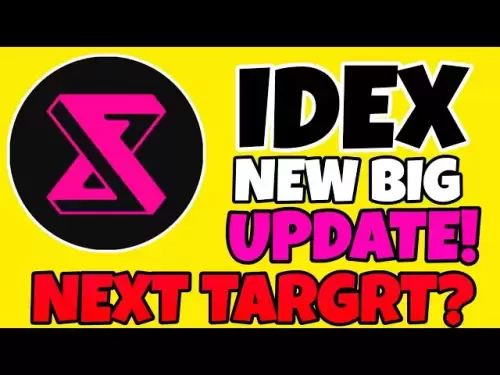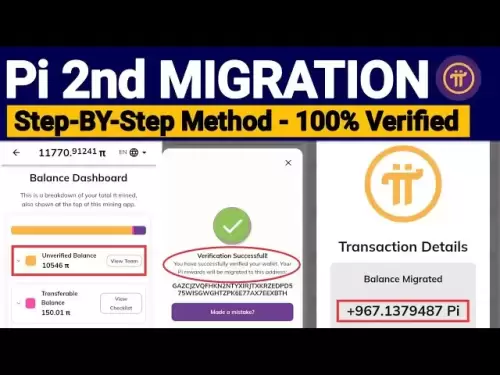-
 Bitcoin
Bitcoin $117,991.5647
-0.03% -
 Ethereum
Ethereum $2,966.4808
0.18% -
 XRP
XRP $2.8076
0.64% -
 Tether USDt
Tether USDt $1.0003
0.00% -
 BNB
BNB $689.9050
-0.63% -
 Solana
Solana $162.0407
-0.80% -
 USDC
USDC $0.9999
0.00% -
 Dogecoin
Dogecoin $0.1995
-1.51% -
 TRON
TRON $0.3001
-1.21% -
 Cardano
Cardano $0.7426
3.25% -
 Hyperliquid
Hyperliquid $47.7978
2.84% -
 Stellar
Stellar $0.4411
16.52% -
 Sui
Sui $3.4267
0.15% -
 Chainlink
Chainlink $15.3148
0.07% -
 Bitcoin Cash
Bitcoin Cash $506.5880
-1.91% -
 Hedera
Hedera $0.2222
12.41% -
 Avalanche
Avalanche $21.2049
1.67% -
 UNUS SED LEO
UNUS SED LEO $9.0606
-0.19% -
 Shiba Inu
Shiba Inu $0.0...01325
-0.86% -
 Toncoin
Toncoin $2.9979
0.32% -
 Litecoin
Litecoin $94.3717
1.13% -
 Polkadot
Polkadot $3.9873
-0.29% -
 Monero
Monero $336.1497
0.92% -
 Dai
Dai $0.9999
-0.01% -
 Uniswap
Uniswap $8.5189
-0.60% -
 Ethena USDe
Ethena USDe $1.0005
-0.04% -
 Pepe
Pepe $0.0...01236
-0.92% -
 Bitget Token
Bitget Token $4.4002
-0.23% -
 Aave
Aave $303.5433
1.05% -
 Bittensor
Bittensor $391.1314
-0.35%
How to use custom token lists on Uniswap?
Uniswap users can enhance their trading experience by creating and importing custom token lists, allowing for easier navigation and management of preferred tokens.
Apr 11, 2025 at 03:35 pm
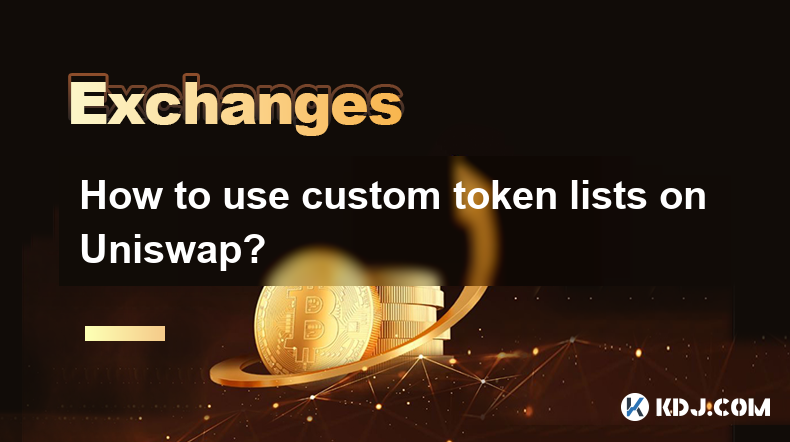
Uniswap, one of the leading decentralized exchanges on the Ethereum blockchain, allows users to trade a wide variety of tokens. One of the powerful features of Uniswap is the ability to use custom token lists. These lists enable users to curate and manage their preferred tokens, making it easier to navigate and trade on the platform. In this article, we will explore how to use custom token lists on Uniswap, providing a detailed guide on the process.
Understanding Custom Token Lists
Custom token lists on Uniswap are essentially curated collections of tokens that users can import and use within the Uniswap interface. These lists can be created by anyone and shared with the community, allowing users to quickly access tokens that are relevant to their trading needs. By using custom token lists, users can streamline their trading experience, focusing on tokens that they are interested in without having to sift through the entire pool of available tokens on Uniswap.
Creating Your Own Custom Token List
To start using custom token lists on Uniswap, you might want to create your own list. Here’s how you can do it:
- Open a text editor: You can use any text editor like Notepad, TextEdit, or a more advanced editor like Visual Studio Code.
- Create a JSON file: Custom token lists are stored in JSON format. Start by creating a new file and saving it with a
.jsonextension. - Add the necessary fields: Your JSON file should include the following fields for each token:
name: The name of the token.address: The Ethereum address of the token.symbol: The symbol of the token.decimals: The number of decimal places the token uses.chainId: The chain ID of the network (e.g., 1 for Ethereum mainnet, 4 for Rinkeby testnet).logoURI: An optional field for the token's logo URL.
Here’s an example of what your JSON file might look like:
{
"name": "My Custom Token List",
"tokens": [{
"name": "Token A",
"address": "0xTokenAAddress",
"symbol": "TOKA",
"decimals": 18,
"chainId": 1,
"logoURI": "https://example.com/tokenA.png"
},
{
"name": "Token B",
"address": "0xTokenBAddress",
"symbol": "TOKB",
"decimals": 6,
"chainId": 1,
"logoURI": "https://example.com/tokenB.png"
}
]
}
- Save the file: Once you have added all the tokens you want to include, save the file.
Importing a Custom Token List into Uniswap
After creating your custom token list, the next step is to import it into Uniswap. Here’s how you can do it:
- Visit Uniswap: Go to the Uniswap website and connect your Ethereum wallet.
- Access the token list settings: Click on the settings icon (usually located in the top right corner of the interface) and select “Manage Token Lists.”
- Add a new list: Click on “Add a list” and enter the URL where your JSON file is hosted. If you are using a local file, you will need to host it on a server or use a service like GitHub to make it accessible via a URL.
- Import the list: Once you enter the URL, click on “Import” to add the list to Uniswap. The tokens from your custom list will now appear in the token selection dropdown.
Using Tokens from Your Custom List
With your custom token list imported, you can now easily access and trade the tokens you have added. Here’s how to use them:
- Select a token: When you want to trade, click on the token selection dropdown and you will see your custom list as an option. Click on it to view the tokens in your list.
- Choose a token to trade: Select the token you want to trade from your custom list. The token will now be available for trading within the Uniswap interface.
Managing and Updating Your Custom Token List
Over time, you might need to update your custom token list to reflect changes in token addresses, add new tokens, or remove tokens that are no longer relevant. Here’s how you can manage and update your list:
- Edit the JSON file: Open the JSON file you created earlier and make the necessary changes. You can add new tokens, update existing tokens, or remove tokens as needed.
- Save the changes: After making your changes, save the JSON file.
- Update the list on Uniswap: Go back to the Uniswap interface, access the token list settings, and update the URL of your custom list to reflect the new version of your JSON file. The changes will be reflected in Uniswap once you import the updated list.
Sharing Your Custom Token List
If you want to share your custom token list with others, you can do so by hosting your JSON file on a public server or using a platform like GitHub. Here’s how to share your list:
- Host the JSON file: Upload your JSON file to a server or a platform like GitHub. Make sure the file is publicly accessible.
- Share the URL: Share the URL of your JSON file with others. They can then import your custom token list into their Uniswap interface using the steps outlined above.
Frequently Asked Questions
Q: Can I use custom token lists on other decentralized exchanges besides Uniswap?
A: While custom token lists are a feature specific to Uniswap, other decentralized exchanges may offer similar functionalities. It’s important to check the documentation of each exchange to see if they support custom token lists or similar features.
Q: Are there any risks associated with using custom token lists?
A: Yes, there are potential risks. If you import a custom token list from an untrusted source, you might be exposed to tokens that are scams or have security vulnerabilities. Always ensure that you trust the source of any custom token list you import.
Q: Can I use custom token lists on mobile versions of Uniswap?
A: Yes, you can use custom token lists on the mobile version of Uniswap. The process is similar to the desktop version, where you access the settings and manage token lists through the app interface.
Q: How can I ensure that the tokens in my custom list are up to date?
A: To keep your custom token list up to date, you should regularly review and update the JSON file with the latest token information. Additionally, you can set up notifications or follow token projects to stay informed about any changes.
Disclaimer:info@kdj.com
The information provided is not trading advice. kdj.com does not assume any responsibility for any investments made based on the information provided in this article. Cryptocurrencies are highly volatile and it is highly recommended that you invest with caution after thorough research!
If you believe that the content used on this website infringes your copyright, please contact us immediately (info@kdj.com) and we will delete it promptly.
- Crypto, Gold, and Bitcoin: A New York Minute on the Digital Gold Rush
- 2025-07-13 20:30:16
- Crypto iGaming in India: JetTon, LunarBet, and the Evolving Landscape
- 2025-07-13 20:50:16
- XRP Price, Whales, and Payment Tokens: A New Era for Crypto?
- 2025-07-13 20:35:16
- Shiba Inu, Little Pepe, and the $1 Dream: A Meme Coin Showdown
- 2025-07-13 20:50:17
- Snorter Trading Bot: The Meme Coin Presale That's More Than Just Hype
- 2025-07-13 18:30:16
- Unlocking Blockchain Insights: A Deep Dive with Bitquery API for Data Query
- 2025-07-13 18:30:16
Related knowledge
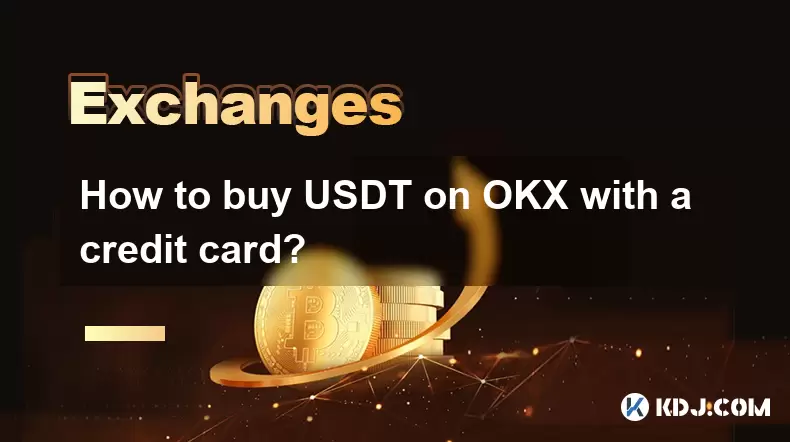
How to buy USDT on OKX with a credit card?
Jul 10,2025 at 01:14pm
What is USDT and why buy it on OKX?USDT (Tether) is one of the most widely used stablecoins in the cryptocurrency market. It is pegged to the value of...
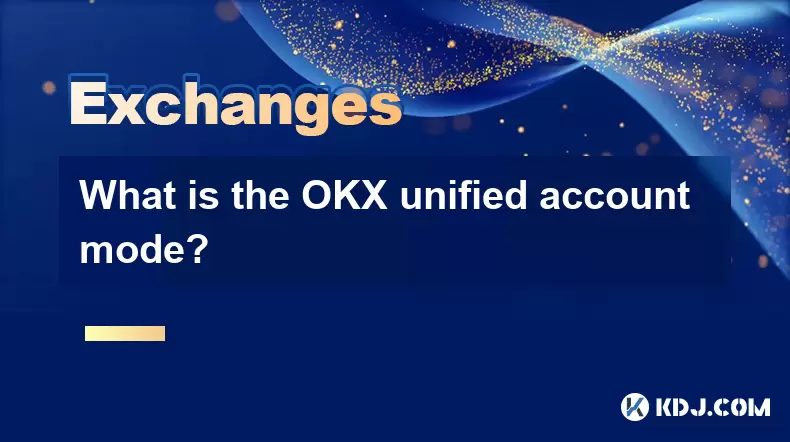
What is the OKX unified account mode?
Jul 09,2025 at 01:07pm
Understanding the OKX Unified Account ModeThe OKX unified account mode is a feature introduced by OKX, one of the leading cryptocurrency exchanges glo...
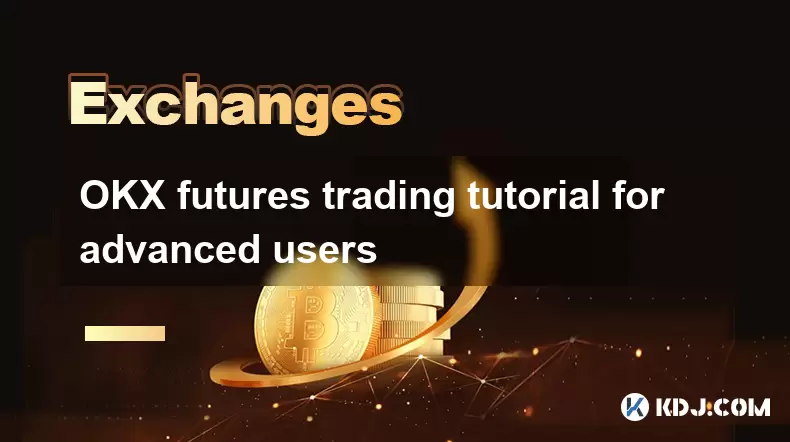
OKX futures trading tutorial for advanced users
Jul 09,2025 at 07:29am
Understanding OKX Futures Trading InterfaceBefore diving into advanced strategies, it's crucial to have a deep understanding of the OKX futures tradin...
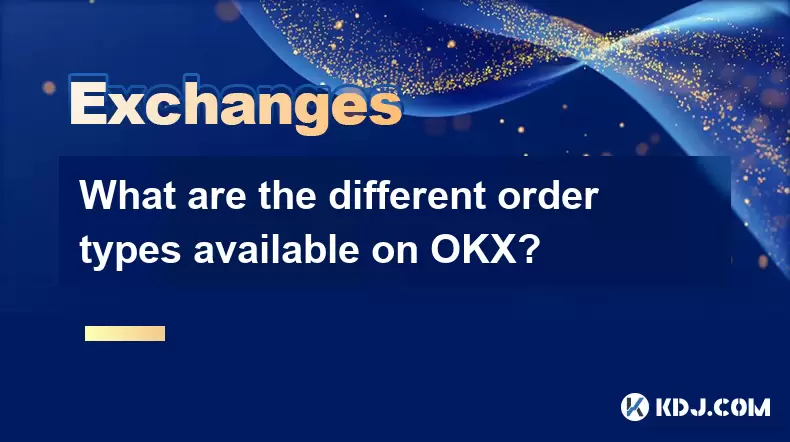
What are the different order types available on OKX?
Jul 08,2025 at 10:15pm
Understanding Order Types on OKXOKX is one of the leading cryptocurrency exchanges globally, offering a wide array of trading tools and order types to...
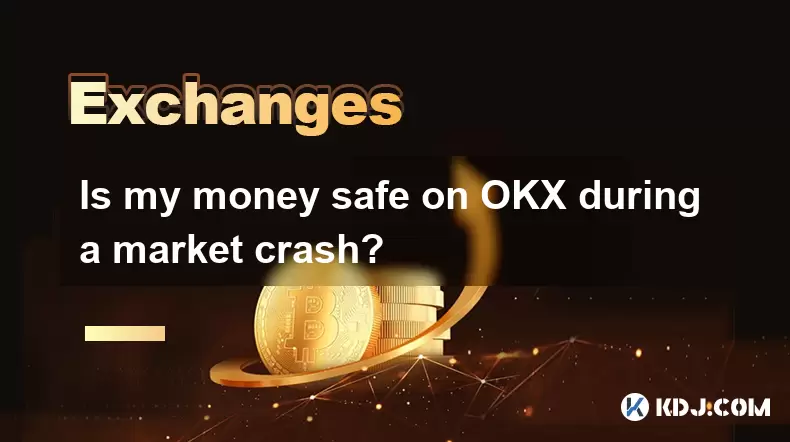
Is my money safe on OKX during a market crash?
Jul 09,2025 at 01:43pm
Understanding Market Crashes and Cryptocurrency ExchangesDuring a market crash, cryptocurrency prices plummet rapidly, often causing panic among trade...
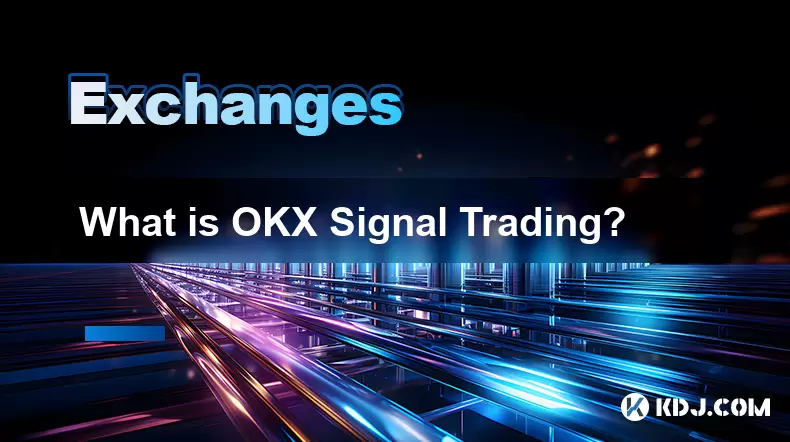
What is OKX Signal Trading?
Jul 13,2025 at 02:07am
What Is OKX Signal Trading?OKX is one of the world's leading cryptocurrency exchanges, offering a wide range of tools and services for traders of all ...

How to buy USDT on OKX with a credit card?
Jul 10,2025 at 01:14pm
What is USDT and why buy it on OKX?USDT (Tether) is one of the most widely used stablecoins in the cryptocurrency market. It is pegged to the value of...

What is the OKX unified account mode?
Jul 09,2025 at 01:07pm
Understanding the OKX Unified Account ModeThe OKX unified account mode is a feature introduced by OKX, one of the leading cryptocurrency exchanges glo...

OKX futures trading tutorial for advanced users
Jul 09,2025 at 07:29am
Understanding OKX Futures Trading InterfaceBefore diving into advanced strategies, it's crucial to have a deep understanding of the OKX futures tradin...

What are the different order types available on OKX?
Jul 08,2025 at 10:15pm
Understanding Order Types on OKXOKX is one of the leading cryptocurrency exchanges globally, offering a wide array of trading tools and order types to...

Is my money safe on OKX during a market crash?
Jul 09,2025 at 01:43pm
Understanding Market Crashes and Cryptocurrency ExchangesDuring a market crash, cryptocurrency prices plummet rapidly, often causing panic among trade...

What is OKX Signal Trading?
Jul 13,2025 at 02:07am
What Is OKX Signal Trading?OKX is one of the world's leading cryptocurrency exchanges, offering a wide range of tools and services for traders of all ...
See all articles





















